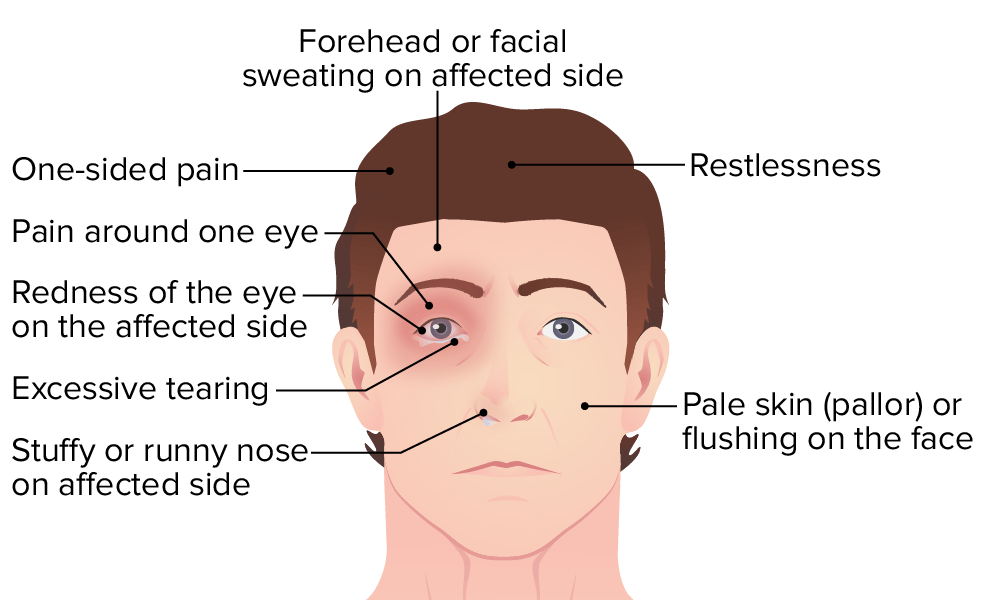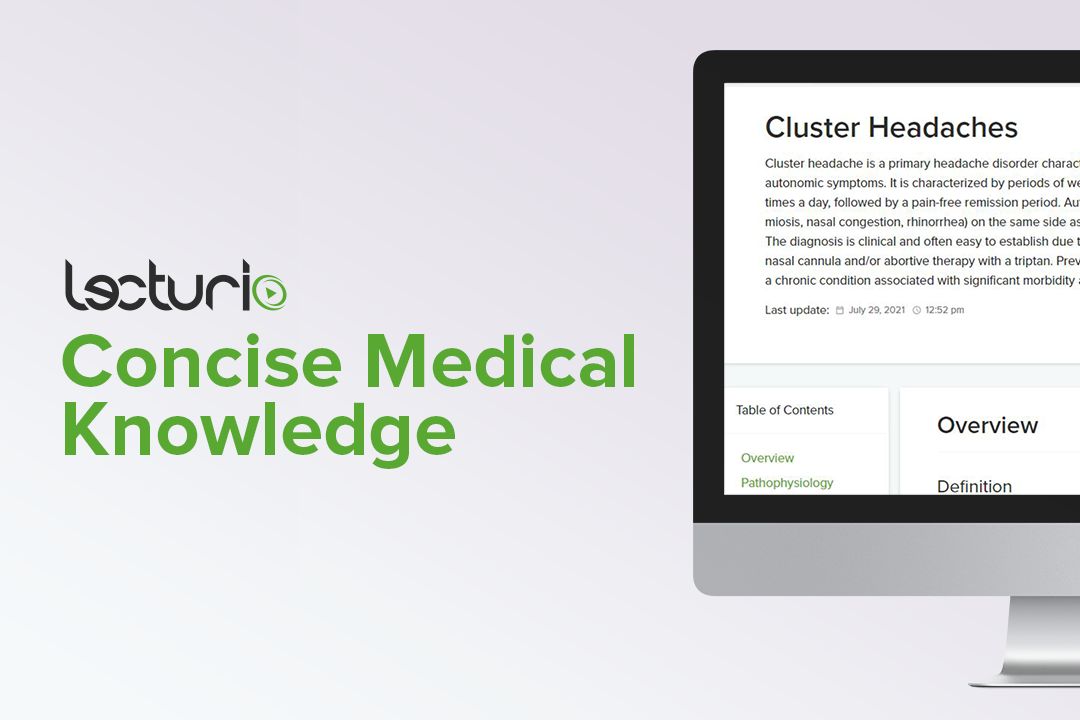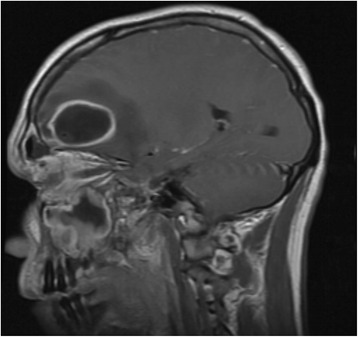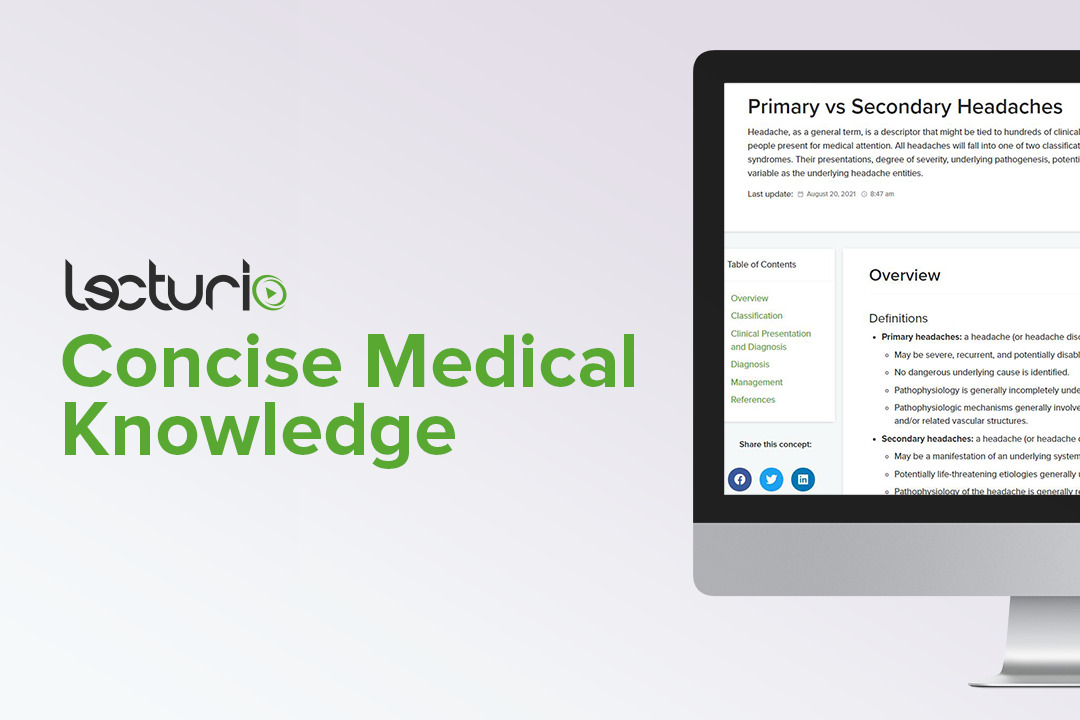Playlist
Show Playlist
Hide Playlist
Cluster Headache (Emergency Medicine)
-
Emergency Medicine Bord Approach Headache.pdf
-
Download Lecture Overview
00:01 The other primary headache disorder that we see in the Emergency Department are cluster headaches. 00:06 Cluster headaches are more common in men than in women and they occur over a period of time. 00:13 So they occur over a period of days to weeks and can be brought on by alcohol use, stress, as well as climate changes. 00:20 This is a sudden onset, unilateral headache. 00:24 Oftentimes, patients describe it as being behind one of their eyes and the headache generally lasts between 15 minutes to about three hours in length of time. 00:34 Patients who present with cluster headaches are generally very, very uncomfortable. 00:38 This is a severe painful, painful headache. 00:41 They may be agitated, they may be rubbing their head, and they may also have ipsilateral ptosis, so drooping of the eyelid, miosis, so a constricted pupil, as well as nasal congestion on that side, tearing and injection of the eye. 00:59 So the eye might look very red. 01:00 So when someone comes in with these symptoms, we definitely wanna make sure we’re thinking about a cluster headache and the most common thing that points us in the direction of diagnosing a cluster headache is someone having a history of cluster headaches. 01:13 So they come in and they say, “I’ve had this a handful of times before.” And they may know that it’s called a cluster headache or they might not, but a history of similar is something that definitely should point you in this direction. 01:25 Now, you wanna consider getting some kind of neuroimaging to rule out a space occupying lesion if a patient has no prior history. 01:33 So if they come in saying they’ve never experienced this before, you can imagine that if your patient is very uncomfortable and in severe pain, they may require additional workup if you’re thinking about this problem. 01:43 The management for cluster headaches is actually quite interesting. 01:47 The treatment is relatively simple and involves placing your patient on a high flow non-rebreather mask of oxygen. 01:54 This is actually effective in approximately 80% of patients presenting with cluster headaches and is a very easy and quick thing that can be done. 02:02 Sumatriptan is another medication that has been shown to be of some benefit. 02:07 And lastly, steroids such as prednisone can break the cycle of the cluster headache. 02:14 So it should be prescribed to a patient as well to prevent them from getting future headaches.
About the Lecture
The lecture Cluster Headache (Emergency Medicine) by Sharon Bord, MD is from the course Neurologic and Psychiatric Emergencies.
Included Quiz Questions
Which of the following is TRUE regarding a cluster headache?
- The headache can last for about 3 hours.
- The onset is generally gradual and occurs bilaterally.
- It can also be described as a band-like headache.
- Patients with this type of headache can carry out their daily activities.
- It is more common in women than in men.
Which symptom and/or sign is NOT related to cluster headache?
- Dry eyes
- Miosis
- Red eyes
- Nasal congestion
- Ptosis
The cluster cycle can be interrupted by which of the following?
- Prednisone
- Sumatriptan
- High flow oxygen
- Morphine
- Ibuprofen
Customer reviews
5,0 of 5 stars
| 5 Stars |
|
5 |
| 4 Stars |
|
0 |
| 3 Stars |
|
0 |
| 2 Stars |
|
0 |
| 1 Star |
|
0 |







